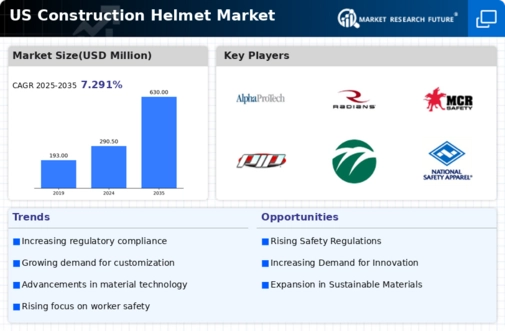The US Construction Helmet Market is characterized by a diverse array of manufacturers and suppliers, all vying for a considerable share driven by robust demand for safety equipment across various sectors. The market is distinguished by active players who continuously innovate to enhance the safety features, comfort, and design of construction helmets, catering to evolving regulations and preferences in the industry.
Competitive insights reveal a landscape shaped by factors such as product differentiation, strategic partnerships, technological advancements, and pricing strategies. As safety regulations become increasingly stringent, companies are investing in research and development to provide helmets that comply with national safety standards while incorporating cutting-edge designs and materials to ensure maximum protection and functionality.
Gateway Safety has established a notable presence in the US Construction Helmet Market, recognized for its commitment to producing high-quality personal protective equipment tailored for the construction sector. The company is known for its innovative approach, providing helmets designed with enhanced comfort and safety features that meet rigorous industry standards.
Gateway Safety's strengths lie in its ability to offer a diverse product range which includes both traditional and modern helmet styles, appealing to various user preferences. Moreover, the company actively engages in promoting safety awareness through educational campaigns while maintaining strong relationships with distributors, thus ensuring a consistent market presence and accessibility of its products in the US.
Pyramex Safety also plays a significant role in the US Construction Helmet Market with a comprehensive portfolio of personal protective equipment focused on delivering maximum protection and comfort. The company’s offerings feature various styles and functionalities that are designed to enhance user experience on job sites, collaborating closely with construction professionals to meet their specific needs.
Pyramex Safety has built its brand on a reputation for quality and reliability, often seen as a go-to for construction safety solutions. The company’s strategic initiatives include mergers and acquisitions that enhance its capabilities, allowing for broader distribution networks and improved product availability. Pyramex Safety is well-regarded for its proprietary technologies and materials which are incorporated into its helmets, underscoring its dedication to innovation within the US construction helmet sector.



















